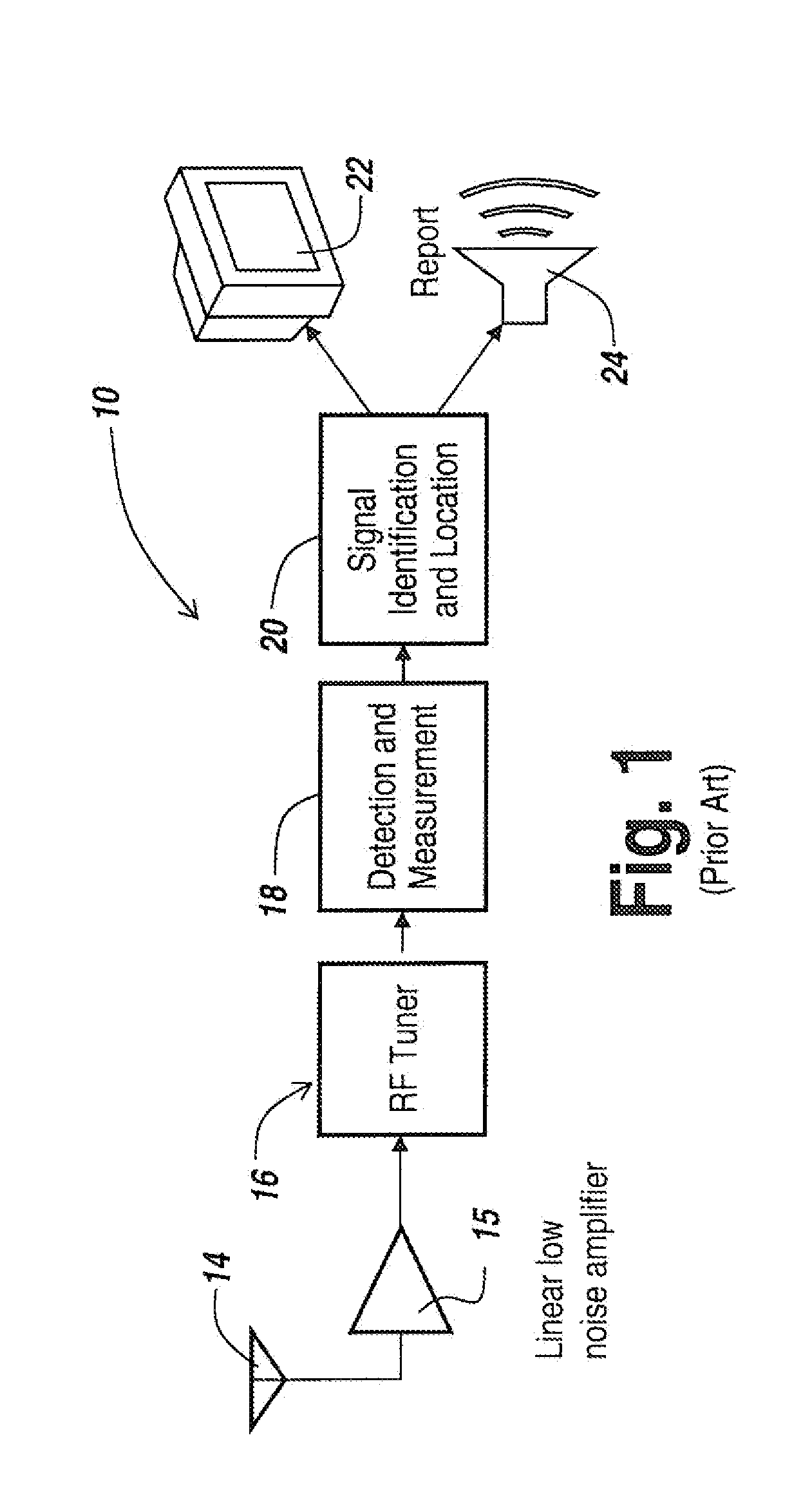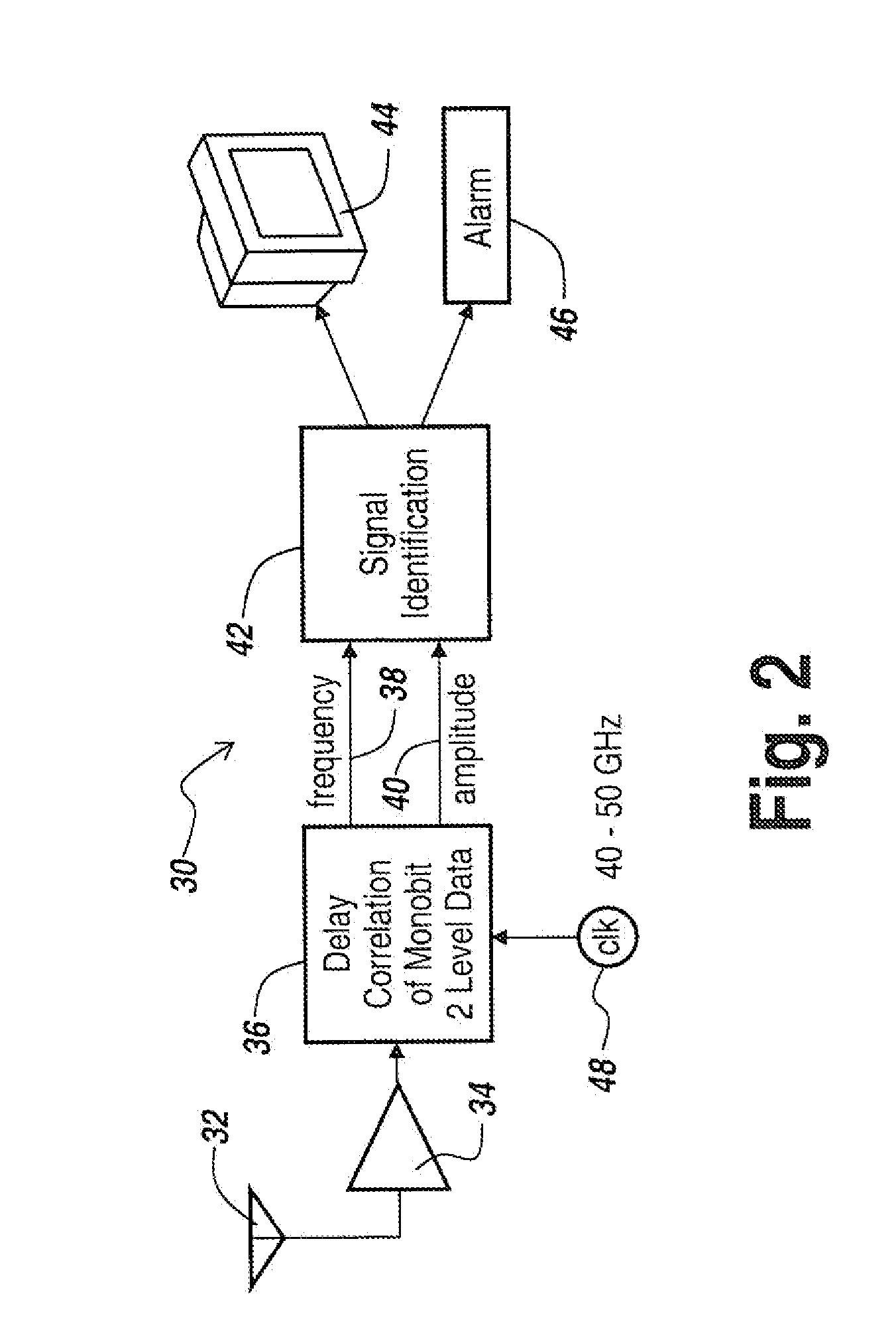Monobit Based Low Cost High Performance Radar Warning Receiver
a radar warning and low-cost technology, applied in the field of radar warning receivers, can solve the problems of large market for these devices, high incoming rf signal, and high cost of parts, and achieve the effects of small and inexpensive, low cost, and substantial suppression of nois
- Summary
- Abstract
- Description
- Claims
- Application Information
AI Technical Summary
Benefits of technology
Problems solved by technology
Method used
Image
Examples
Embodiment Construction
[0052]Referring now to FIG. 1, prior art radar warning receivers 10 typically include an RF tuner which selects a more limited region of frequency for processing at any instant of time. The outputs of the RF tuners are coupled to a detection and measurement module 18, with the output of module 18 being applied to a signal identification and location module 20 to output either visually at a display 22 or orally at a speaker 24 the fact of the existence of a threat radar signal.
[0053]In the FIG. 1 analog embodiment, the radar warning receiver looks at multiples of the measurements from the detected amplitude of the incoming signals to determine the existence of a threat type of radar that is observing the platform in which the radar warning receiver is placed.
[0054]It will be appreciated that the RF tuners in essence employ a number of delay lines that act as filters, each responsive to a different frequency. Thus one could use a bank of filters to provide an instantaneous frequency m...
PUM
 Login to View More
Login to View More Abstract
Description
Claims
Application Information
 Login to View More
Login to View More - R&D
- Intellectual Property
- Life Sciences
- Materials
- Tech Scout
- Unparalleled Data Quality
- Higher Quality Content
- 60% Fewer Hallucinations
Browse by: Latest US Patents, China's latest patents, Technical Efficacy Thesaurus, Application Domain, Technology Topic, Popular Technical Reports.
© 2025 PatSnap. All rights reserved.Legal|Privacy policy|Modern Slavery Act Transparency Statement|Sitemap|About US| Contact US: help@patsnap.com



